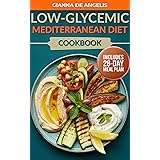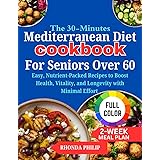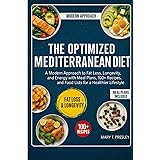The quest for foods that truly enhance health and promote longevity often leads us to nutrient-dense options like sardines. As highlighted in the video above, these small fish are celebrated for their convenience and robust nutritional profile, packed with essential omega-3 fatty acids, vitamin D, and calcium. However, the seemingly simple choice of canned sardines for seniors can become surprisingly complex, as not all products offer the same benefits. The way sardines are processed, the liquids they are packed in, and even potential contaminants can transform this superfood into something less beneficial, or even detrimental, to an older adult’s long-term health goals.
For seniors, making discerning choices about sardines is about more than just taste; it is about protecting the heart, strengthening bones, safeguarding cognitive function, and ensuring overall vitality. This guide will walk you through the essential principles for selecting the best sardines, ensuring they become a powerful ally in supporting independence and thriving well into later years.
The Hidden Threat of Sodium in Canned Sardines for Seniors
One of the most critical considerations for older adults when choosing canned sardines is sodium content. While sardines are often praised for their dense nutrition, like many preserved products, they can be packed with significant amounts of sodium. For seniors, whose bodies are more sensitive to dietary changes, this can quickly become a problem, as maintaining optimal blood pressure is paramount for cardiovascular health, protecting the heart, kidneys, brain, and eyes from long-term damage.
Sodium is traditionally used in canning as a natural preservative, inhibiting bacterial growth, enhancing flavor, and maintaining texture. Unfortunately, the amount added in many canned sardine products can far exceed what is healthy for an aging system. A single tin may contain anywhere from 300 to over 500 milligrams of sodium. To put this into perspective, the American Heart Association recommends that seniors and those at risk of hypertension limit their sodium intake to around 1,500 milligrams per day. This means that one small can of sardines could easily deliver a third of the daily allowance, sometimes more, especially if other dietary sources of salt are not carefully monitored. This threshold can be surpassed quickly when considering bread, cheese, or other processed items.
Elevated sodium intake leads to an increase in blood volume because the body retains more water to balance the salt concentration. This extra fluid places considerable pressure on the walls of blood vessels, thereby raising blood pressure. Over time, this sustained pressure can damage delicate capillaries in the brain, contributing to cognitive decline, or strain the kidneys, reducing their function. The heart itself is forced to pump harder, which can lead to a thickening of the heart muscle and eventually increase the risk of heart failure. For seniors who may already be managing borderline hypertension, the regular consumption of high-sodium sardines can become a silent but very real threat to their well-being. Furthermore, high sodium intake can contribute to symptoms such as swelling in the legs, shortness of breath from fluid buildup, and fatigue, all of which are often preventable through mindful dietary choices.
The solution, fortunately, is not to avoid sardines altogether. Instead, it is about making informed decisions. There are many brands that offer low-sodium versions, often labeled as “no salt added” or “lightly salted.” These products naturally contain some sodium, as fish naturally does, but the levels are far more manageable for seniors. These versions allow the impressive benefits of sardines – their omega-3 fatty acids, vitamin D, vitamin B12, and calcium from the bones – to be enjoyed without the damaging impact of too much salt. Reading the label becomes an essential step, a practice encouraged for all seniors consistently. For example, comparing two cans side-by-side and choosing the one with “100mg sodium” over “450mg sodium” can make a profound difference over weeks and months.
Choosing the Best Packing Liquid: Elevating Sardines for Longevity
When considering canned sardines for seniors, the type of liquid they are packed in is another critical factor influencing their overall health benefits. This seemingly small detail, whether it is extra virgin olive oil, water, or various refined vegetable oils or sauces, can have profound consequences on cardiovascular health, metabolic function, and long-term well-being. For older adults, whose bodies are more sensitive to oxidative stress and inflammation, this choice can quite literally determine if the food promotes longevity or accelerates decline.
The Gold Standard: Extra Virgin Olive Oil
Extra virgin olive oil (EVOO) has been revered for millennia in Mediterranean cultures, not just as a culinary staple but as a cornerstone of health. It is rich in monounsaturated fats, polyphenols, and antioxidants that work to reduce inflammation, protect arteries, and support brain function. When sardines are packed in EVOO, the fish and the oil work in powerful synergy. The omega-3 fatty acids from the sardines, EPA and DHA, combine with the oleic acid and polyphenols of the olive oil to create a protective environment in the body. For seniors, this can mean a reduced risk of atherosclerosis, improved cognitive preservation, and support for joints and skin, which naturally become more vulnerable with age. Furthermore, olive oil aids in the absorption of fat-soluble vitamins found in sardines, such as vitamin D and vitamin E, significantly enhancing the nutritional payoff. Think of EVOO as a natural guardian, preserving and amplifying the inherent goodness of the sardines.
The Pitfalls of Refined Vegetable Oils
In stark contrast are refined vegetable oils, such as soybean oil or sunflower oil, which are commonly found in cheaper sardine products. These oils are typically high in omega-6 fatty acids. While omega-6s are not inherently harmful, the modern diet already contains an excessive amount of them relative to omega-3s, and this imbalance promotes inflammation. For seniors, chronic low-grade inflammation is a silent driver of many age-related diseases, including heart disease, arthritis, diabetes, and even neurodegeneration. When sardines, which should be an anti-inflammatory food, are paired with refined vegetable oils, their benefits can be diluted, sometimes even reversed. It is like trying to put out a fire with a damp cloth instead of water; the intended effect is compromised.
Moreover, refined oils are often processed under high heat, stripping them of beneficial antioxidants and leaving behind compounds that can oxidize easily. When these oxidized oils are consumed, they can generate free radicals in the body, which damage cells, accelerate aging, and increase the risk of chronic disease. This essentially turns a potentially healing food into one that introduces new challenges to an already sensitive system.
Decoding Sauces: Tomato, Mustard, and Hidden Ingredients
Some sardines are packed in various sauces, such as tomato or mustard. While these might add flavor and appear harmless, their reality is often more complex. Tomato sauce can be beneficial if it is simple and low in additives, as cooked tomatoes contain lycopene, a powerful antioxidant. However, many canned sardines in sauce come with added sugar, excess salt, or artificial preservatives. For seniors, sugar can lead to spikes in blood glucose and contribute to insulin resistance, while preservatives may irritate digestion or place an unnecessary burden on the liver and kidneys. Mustard-based sardines often contain vinegar, artificial colorings, and stabilizers that, while not catastrophic in small amounts, provide no health benefit and can detract from what should be a clean, nourishing food. When reviewing labels, the simpler the ingredient list, the closer the food remains to its natural, beneficial state.
Strong Bones, Strong Future: Maximizing Calcium and Vitamin D from Sardines
Protecting the skeletal system is a fundamental aspect of healthy aging. Bones are dynamic, living tissues that are constantly remodeling, undergoing a delicate balance of breakdown and rebuilding. As individuals age, bone resorption often begins to outpace bone formation, leading to weaker and more fragile bones. For seniors, this shift can manifest as osteoporosis, a condition where bones become brittle and prone to fractures. A simple fall that might have resulted in a bruise in younger years could lead to a hip fracture or spinal compression in later life, events that often significantly impact independence and quality of life. In this context, sardines, when chosen wisely, offer a unique and powerful source of calcium and vitamin D in a natural, highly absorbable form.
Seniors require a steady intake of calcium to preserve bone density, and also to support crucial functions like nerve transmission, muscle contraction, and heart rhythm. Unfortunately, calcium intake frequently declines with age, often due to reduced appetite, dental issues, or difficulty digesting dairy products. Sardines with their bones intact provide a practical and non-dairy source of calcium that is both bioavailable and well-tolerated. Unlike calcium supplements, which can sometimes cause digestive issues or carry a risk of kidney stones, the calcium in sardines comes naturally packaged with phosphorus, vitamin D, and other trace minerals that work synergistically in the bone-building process. This comprehensive nutritional profile makes sardines a more holistic option compared to isolated calcium pills.
The bones within canned sardines are soft due to the canning process, making them easy to chew and digest. A single serving of sardines with bones can, in fact, provide more calcium than a glass of milk. For older adults who are lactose intolerant or have chosen to reduce dairy for other reasons, this presents an invaluable alternative. Crucially, sardines also deliver vitamin D, which is absolutely essential for calcium absorption. Without adequate vitamin D, much of the calcium consumed passes through the body unused. Seniors are particularly vulnerable to vitamin D deficiency because of reduced skin synthesis from sunlight exposure and less efficient conversion in the liver and kidneys. Therefore, the combination of calcium and vitamin D in sardines creates a natural, dual-action solution to two common nutritional deficiencies prevalent in aging populations.
The benefits extend further; sardines supply omega-3 fatty acids, known for their anti-inflammatory properties. This is significant because inflammation itself can contribute to bone weakening by accelerating the breakdown process. Research has shown that omega-3s can support bone mineral density and may help reduce the risk of fractures. In this manner, sardines demonstrate a powerful synergy, where their diverse nutrients support not only the skeletal structure directly but also the broader physiological environment that is crucial for maintaining bone health.
However, it is important to recognize potential pitfalls. Not all canned sardines retain their bones, and some are processed in ways that diminish their calcium content. Boneless sardines, while still nutritious in terms of protein and omega-3s, lose the critical advantage of bone-derived calcium. Seniors choosing these varieties miss out on one of the greatest benefits that sardines can offer for bone health. Additionally, sardines packed in highly acidic sauces may cause some minerals to leach into the liquid, reducing the density of nutrients in the bones themselves. While this loss may not be dramatic per serving, it can accumulate over time. For optimal bone health, sardines packed in olive oil or water with bones intact remain the gold standard.
There is also the overlooked dimension of sodium. As discussed earlier, high sodium intake can increase calcium loss through urine. For seniors relying on sardines for calcium, choosing high-sodium varieties creates a paradox: the very food intended to supply calcium also encourages its excretion. This is precisely why selecting low-sodium sardines with bones intact is especially important, preserving the benefit while avoiding the counterproductive loss. It serves as a reminder that in nutrition, context is paramount; a food’s value is determined not only by its components but also by how it interacts with the body’s complex processes.
Clean Catch: Minimizing Contaminants for Safer Sardine Consumption
When considering any fish for a longevity-focused diet, the presence of contaminants is a natural and valid concern. The world’s oceans, while still providing abundant food, are regrettably impacted by pollution and industrial activity. For seniors, who are often more vulnerable to the cumulative effects of toxins over a lifetime, the question arises: how can the extraordinary benefits of sardines be reaped while minimizing potential harm from mercury and other contaminants? This is not merely a theoretical concern; it can profoundly shape health outcomes over years, impacting brain function, cardiovascular resilience, and overall quality of life.
Mercury Concerns: Small Fish, Big Advantage
Mercury is the most widely recognized contaminant in fish, and it warrants serious attention. This heavy metal accumulates in the food chain, becoming more concentrated in larger and longer-living fish such such as tuna, swordfish, and shark. Exposure to mercury is associated with neurological problems, including memory loss and reduced cognitive function, which are particularly concerning for seniors. It can also affect the cardiovascular system, potentially interfering with heart rhythm and increasing oxidative stress. However, here is the critical distinction: sardines, being small fish that live for only a short period and feed low on the food chain, contain extremely low levels of mercury compared to larger species. This is precisely why sardines are frequently recommended, even by conservative health organizations, as one of the safest seafood options for seniors. Their low mercury profile is not just a benefit; it is a gateway, allowing older adults to enjoy the rich omega-3s, vitamin D, and calcium without the burden of mercury exposure typically associated with eating larger fish. In fact, sardines are among the few fish that can be eaten multiple times a week without significant concern for mercury accumulation, making them a reliable and powerful component in a longevity-focused diet.
Beyond Mercury: PCBs, Dioxins, and Microplastics
Beyond mercury, other contaminants must also be considered. Polychlorinated biphenyls (PCBs), dioxins, and microplastics are now present in many parts of the ocean. While sardines accumulate less of these toxins than larger fish, they are not entirely immune. PCBs and dioxins have been linked to cancer and immune system disruption, while microplastics are an emerging concern, potentially affecting endocrine balance and gut health. For seniors, whose bodies are already managing age-related stress, minimizing any additional toxin exposure is crucial. While eliminating risk entirely is often impossible, it can be significantly reduced by choosing sardines from trusted sources, ideally those that advertise sustainable fishing practices and conduct regular contaminant testing. Some brands go so far as to provide transparency reports on their sourcing and testing, offering an extra layer of reassurance.
Built-in Protection: Sardines’ Natural Defense
One of the fascinating protective aspects of sardines themselves is their nutrient density. The very omega-3 fatty acids that reduce inflammation also help protect the brain from oxidative damage, potentially offsetting some of the risk associated with low-level toxin exposure. Moreover, vitamin B12 and selenium, both abundant in sardines, act as natural detoxifiers. Selenium, in particular, has a remarkable ability to bind with mercury, helping to neutralize its harmful effects. This unique combination means that sardines are considered not only low in mercury but also inherently protective, as they contain nutrients that counterbalance the very toxins that concern us. Seniors who regularly include sardines in their diets gain this built-in defense, a feature often missing from many other foods. It is a powerful example of food acting as medicine, bolstering the body’s natural resilience.
Packaging Matters: BPA-Free Choices
The packaging itself also plays a role in minimizing contaminant exposure. Some sardines are canned with linings that may contain Bisphenol A (BPA), a chemical linked to hormonal disruption and an increased risk of certain cancers. Many companies are now transitioning to BPA-free cans, and these are preferable, especially for seniors. While BPA exposure per serving may be small, it can accumulate over years. Just as careful consideration is given to the contents of the sardines, equal mindfulness should be extended to the container. This attention to detail aligns with the principle of longevity: reducing unnecessary exposures wherever possible, even in small amounts, because these can accumulate and have a measurable impact over a lifetime.
Easy Eating: Sardines and Digestive Comfort for Aging Bodies
When discussing nutrition for seniors, it is imperative to consider not only a food’s nutrient profile but also its digestibility. A food’s richness in vitamins, minerals, or fatty acids is less beneficial if, once consumed, it causes discomfort, indigestion, or is poorly absorbed. Digestibility becomes a central theme in later life, as the gastrointestinal system undergoes significant age-related changes. Stomach acid production often decreases, the activity of digestive enzymes can decline, and the motility of the intestines may slow, frequently leading to issues like bloating or constipation. For these reasons, even a nutrient-dense food like sardines must be examined through the lens of senior-friendly digestion. Selecting sardines that are prepared and packaged in ways that are gentle on the stomach allows older adults to fully enjoy their health benefits without sacrificing comfort.
First, the physical nature of sardines offers a distinct advantage. Unlike larger fish with tough textures, sardines are relatively soft, particularly after the canning process. Their bones, which might otherwise be a concern for digestion, become tender and easily chewable, often dissolving with minimal effort. This inherent softness makes them a practical and accessible protein source for seniors who may have dental issues, such as sensitive teeth or dentures, or general difficulty with chewing. In many cases, sardines with bones are more digestible than tougher meats like beef or chicken, which demand more chewing effort and a longer breakdown period in the stomach. For those who struggle with traditional protein sources, sardines represent a truly accessible and nutrient-rich alternative.
Another advantage of sardines is their relatively small size and moderate fat content compared to larger, fattier fish. While they are rich in beneficial omega-3 fatty acids, the overall fat portion is balanced, and when packed in high-quality olive oil or water, they remain light and easy to digest. This stands in stark contrast to fried or heavily processed meats, which often linger in the stomach, demanding greater digestive effort and sometimes causing a feeling of heaviness or discomfort. Seniors frequently find that sardines do not cause the heaviness or indigestion that other proteins can, provided clean versions without heavy sauces or excessive seasoning are chosen. The lighter fat profile also means less demand on bile production, which can sometimes be reduced with age.
This brings us back to additives. Many sardines available on the market are packed with sauces, preservatives, or strong spices designed to enhance flavor, but which can irritate sensitive digestive systems. Mustard or spicy sauces, for instance, may provoke acid reflux, a common issue in older adults. Preservatives, while approved for general use, may lead to bloating or gas in individuals with more fragile digestion. For this reason, seniors should favor sardines packed in simple mediums: water, extra virgin olive oil, or a light, minimally processed tomato sauce without extensive ingredient lists. The simpler the preparation, the easier the digestion tends to be, allowing the body to absorb nutrients more efficiently and comfortably.
Digestibility is also closely connected to sodium content. As previously discussed, high salt levels can create fluid retention, which can manifest as bloating and general discomfort. For seniors already managing hypertension, this becomes a double concern. Choosing low-sodium sardines not only protects the cardiovascular system but also reduces the likelihood of digestive distress. Additionally, excessive salt can increase thirst, prompting seniors to drink large amounts of water during meals, which in some cases can dilute stomach acid and further hinder digestion. Once again, the low-sodium option proves not only safer but also more comfortable for the aging digestive system.
The gut microbiome, the diverse community of bacteria residing in the intestines, also plays a crucial role in digestion and overall health. In aging, microbiome diversity often declines, which has been linked to weaker immunity, increased inflammation, and poorer digestion. Sardines, being high in protein and omega-3 fatty acids, support a healthy microbiome by reducing inflammation and providing essential building blocks that contribute to a beneficial bacterial balance. However, this benefit is maximized when sardines are paired with fiber-rich foods such as vegetables, legumes, or whole grains. Fiber feeds the beneficial gut bacteria, while the proteins and fats in sardines provide anti-inflammatory support. For seniors, combining sardines with a crisp salad of leafy greens or a hearty bowl of lentils is not just a culinary preference but a strategic digestive approach that keeps the gut environment healthy and balanced, aiding in smoother digestion and nutrient absorption.
Sardines as a Cornerstone of Healthy Aging and Independence
The journey towards healthy aging and sustained independence is often paved with small, consistent, and informed choices. As we have explored, while sardines are undeniably a nutritional powerhouse, the specific details of their packaging, preparation, and sourcing dictate their true value as a longevity food for seniors. The key is not restriction, but rather an empowered understanding of how to select the best canned sardines for seniors, transforming a common pantry item into a potent ally against age-related decline.
Integrating sardines into a broader healthy dietary pattern, such as the Mediterranean diet, further enhances their benefits. Imagine low-sodium sardines, packed in extra virgin olive oil, flaked over a vibrant salad with a squeeze of fresh lemon, a sprinkle of fresh parsley, and a touch of garlic. These additions not only boost flavor without relying on excessive salt but also provide additional antioxidants and health-promoting compounds. This approach allows sardines to fit seamlessly into a dietary philosophy known for its positive effects on healthspan and longevity, reinforcing healthy aging rather than undermining it.
To summarize, the core principles for maximizing the health benefits of sardines for seniors include:
- Prioritize Low Sodium: Always opt for “no salt added” or “lightly salted” varieties to protect cardiovascular health and kidney function, while avoiding fluid retention.
- Choose Healthy Packing Liquids: Extra virgin olive oil is the gold standard for its synergistic health benefits and preservative qualities. Water-packed sardines are also an excellent choice. Avoid refined vegetable oils like soybean or sunflower oil, which can contribute to inflammation.
- Look for Bones Intact: Select sardines with bones to maximize calcium and vitamin D intake, crucial for strong bones and preventing osteoporosis.
- Minimize Contaminants: Opt for trusted brands that source from well-regulated fisheries and ideally test for contaminants like mercury. Remember, sardines are inherently low in mercury due to their small size.
- Mind the Packaging: Prefer brands that use BPA-free cans to reduce exposure to endocrine-disrupting chemicals.
- Simplify Ingredients: When choosing sardines in sauces, look for minimal, natural ingredients, avoiding added sugars, excessive salt, or artificial preservatives.
- Enhance Digestibility: Their soft texture, moderate fat content (when packed properly), and the choice of simple packing liquids make them gentle on an aging digestive system. Pair them with fiber-rich foods to support gut health.
Longevity is about informed choice, and in the case of choosing canned sardines for seniors, the difference between the best and the worst begins with these discerning selections. These seemingly small decisions, made consistently over months and years, accumulate into meaningful gains for health, resilience, and vitality. By embracing these guidelines, sardines can indeed remain a powerful, convenient, and incredibly beneficial food, helping older adults maintain their independence, cognitive sharpness, and overall quality of life for many years to come.











